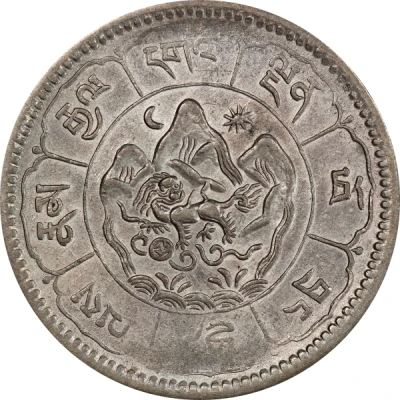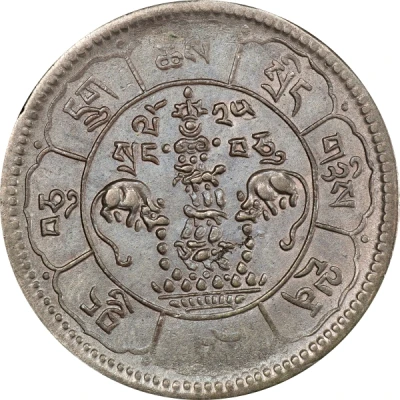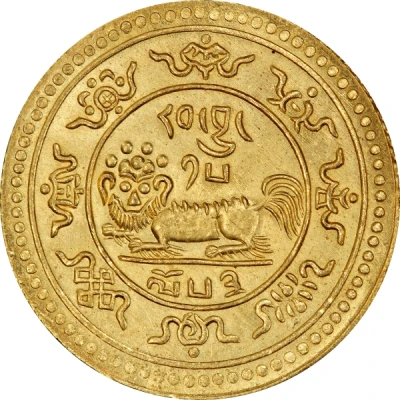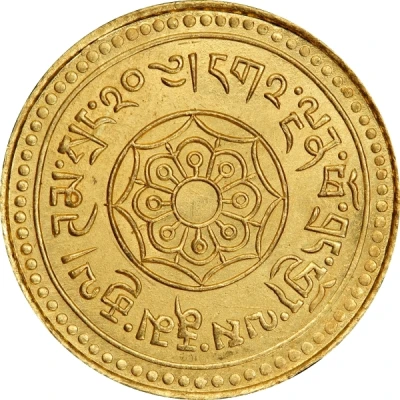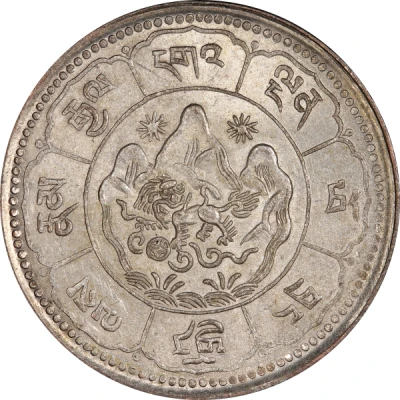
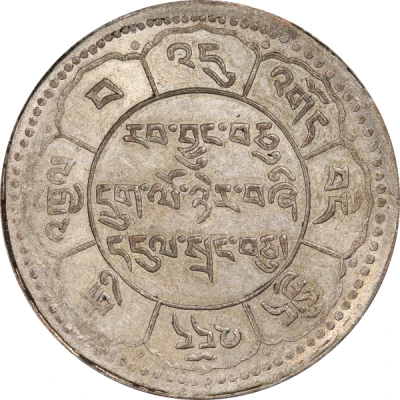

© PCGS
10 Srang Military payment
| Billon | 16.80 g | 32 mm |
| Issuer | Tibet (China) |
|---|---|
| Period | Ganden Phodrang (1642-1959) |
| Type | Standard circulation coin |
| Years | 24-25 (1950-1951) |
| Calendar | Tibetan (16th cycle) |
| Value | 10 Srang |
| Currency | Srang (1792-1959) |
| Composition | Billon |
| Weight | 16.80 g |
| Diameter | 32 mm |
| Thickness | 2.2 mm |
| Shape | Round |
| Technique | Milled |
| Orientation | Medal alignment ↑↑ |
| Demonetized | Yes |
| Updated | 2024-10-04 |
| Numista | N#21439 |
|---|---|
| Rarity index | 63% |
Reverse
Tibetan characters surrounded by more characters within the petals of an eight-petalled lotus.
Script: Tibetan
Lettering:
འདུ་ དགོད་ བདེ་སྐྱིད་ འདོད་རྒུ་ འཁྱིལ་བ་
རབ་བྱུང་ བཅུ་
དྲུག་ལོ་ ལོ་ ཉེར་བཞི་
དངུལ་སྲང་ བཅུ་
Translation:
'du dgod bde skyid 'dod rgu 'khyil ba / rab byung bcu / drug lo nyer bzhi / dngul srang bcu
Affairs, happiness, objects of desire, turning around / Cycle sixteen / Year twenty-four / Ten silver Srang
Edge
Reeded.
Comment
These are said to have been struck to pay the Tibetan Army members.Interesting fact
One interesting fact about the 10 Srang coin from Tibet (China) is that it features a unique blend of Tibetan and Chinese design elements. The obverse side of the coin depicts the Potala Palace, a prominent landmark in Lhasa, Tibet, while the reverse side features the Chinese characters for "Military Payment" and the year of issue, 24-25 (1950-1951). This blend of designs reflects the complex political history of Tibet during this time period, as the region was under Chinese rule but still maintained some autonomy and cultural distinctiveness.
